Optimal tire pressure is important for safe handling and fuel economy. Luckily, if you don’t have an air pressure gauge of your own, it’s easy enough to check your tire pressure at a gas station.
It’s hard to tell whether a tire’s pressure is at the right level just by looking at it. Checking your PSI is the first step to finding out whether you need to add more air to your tires—or let some out. Most gas stations typically have the tools you need to do this, but they can seem a little intimidating if you’ve never needed to use them before.
Maybe your dashboard’s indicator light started warning you about your tire pressure, or maybe you’re just curious to know what yours is. Whatever the case,
Jerry
, the app that saves drivers time and money on
car insurance
, is here to show you the ropes on how to check your tire pressure at a gas station.
No spam · No long forms · No fees
Find insurance savings (100% Free)
How to check your tire pressure at a gas station
Do you suspect you might need to fill your car tires with air but don’t have an air compressor of your own? Luckily, it’s easy enough to do at a gas station. In many cases, it’s actually free, and ones that cost money are usually a couple dollars or less to use.
Checking your tire pressure at a gas station might seem complicated if you’ve never tried it before, but once you know what you’re doing, it’s a pretty quick and straightforward task. Here are the steps involved with checking your tire pressure at a gas station so you can handle it like a pro.
Start with cold tires
The first step to checking your tire pressure: start with cold tires if you can.
Vehicle and tire manufacturers’ recommended PSI levels are based on the readings you’d see with cold tires.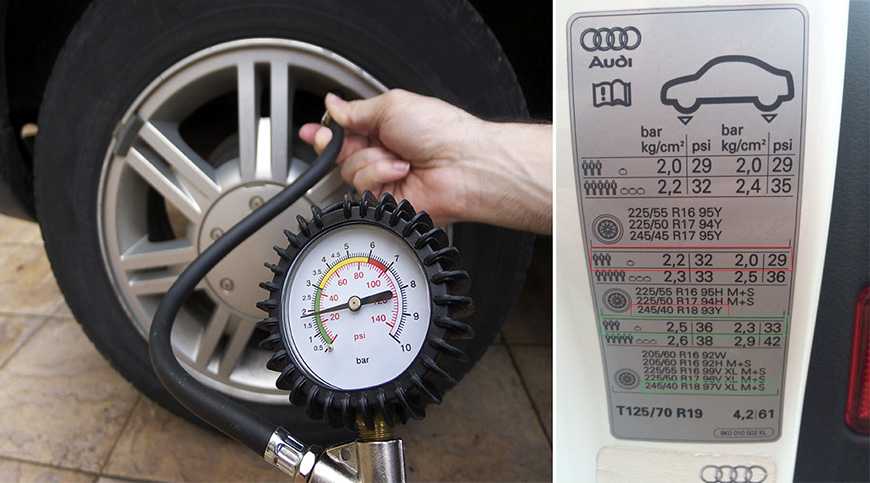 Since tires heat up due to friction against the road when you drive—and since air expands when it gets warmer—hot tires will give your tires a different PSI reading.
Since tires heat up due to friction against the road when you drive—and since air expands when it gets warmer—hot tires will give your tires a different PSI reading.
But if you don’t have an air compressor at home and you’re not within close range of a gas station, filling up your tires while they’re still hot might be inevitable. You might have to compensate by aiming for a PSI that’s slightly higher than the recommended tire pressure range—possibly about 3 to 4 PSI higher, depending on how warm they actually are.
Know the recommended PSI
Tire pressure is measured in pounds per square inch (PSI). Different tires will have different PSI requirements.
There are a few ways to find out your tires’ recommended PSI:
Note the PSI for each vehicle tire
Tire pressure requirements might differ slightly between front and rear tires, so it’s important to note the recommended PSI for each of your tires.
To save yourself some time moving back and forth between tires, consider writing them down on a piece of paper or making a note on your phone.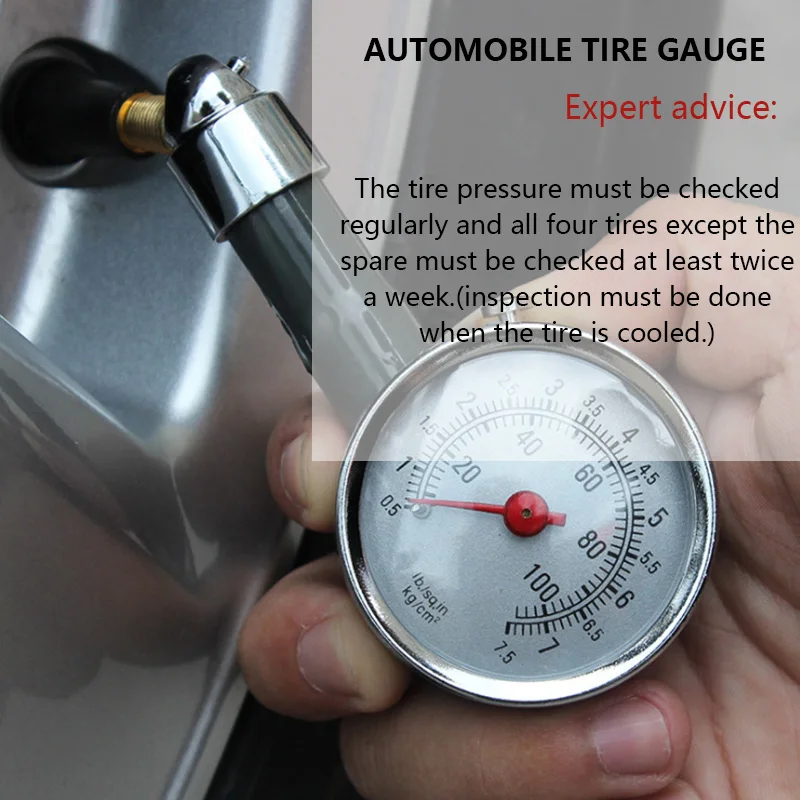
Check the tire pressure with the air pressure gauge
To check your tire’s pressure, start by unscrewing the valve stem cap on your tire. Then, take the air hose and press the pressure gauge on the tire’s valve stem. If you hear a hissing sound, you may need to press down a little more firmly to get an accurate reading on the gauge.
How you’ll find that pressure reading will depend on whether you’re using a manual gauge or a digital one.
A manual gauge has a bar that slides in and out of the gauge and has notches to indicate different measurements, like a ruler. A digital gauge will show you your PSI reading on a screen.
Pro Tip Consider keeping a personal
tire pressure gauge
in the glove box or another area of your car to more easily check your PSI when you need to.
Fill to each tire’s recommended PSI
Different air compressors can work a little differently, so before attempting to add air to your car tires, you’ll want to read the directions on the particular compressor at the gas station.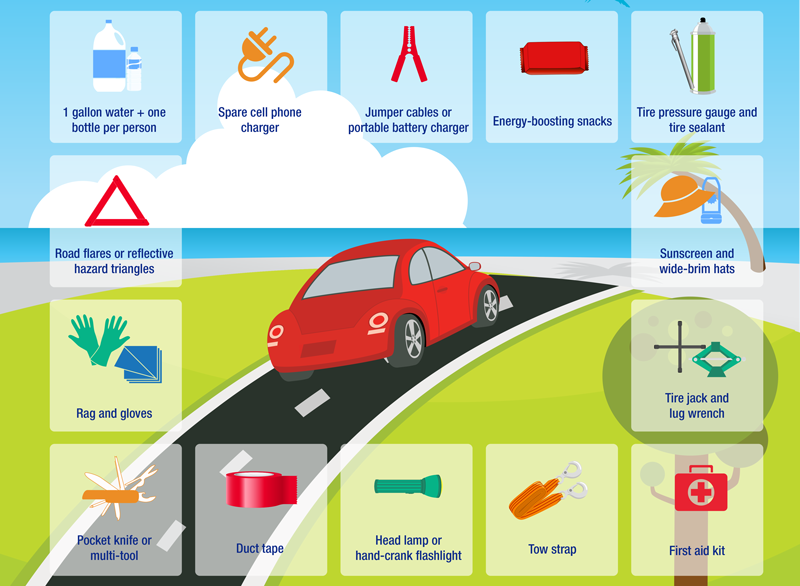
Some will allow you to enter your desired PSI and fill your tire to that level automatically. Others will require you to press down on a handle to add air manually.
Make sure to stay within the recommended PSI range for your tires. You should generally aim to stay within 3 PSI of that range.
Overinflated tires or underinflated tires could end up damaging your vehicle’s tires, so make sure they’re at the correct level before you pull out of the parking lot. And don’t forget to replace those valve stem caps!
Jerry Rating
See rates
Jerry Rating
See rates
Jerry Rating
See rates
Jerry Rating
See rates
Why is tire pressure important?
Driving with the correct tire pressure in all your tires is vital for optimizing your car’s performance, as well as your safety.
Overall handling is more responsive, and it’s easier to come to a quick stop when you need to. Tires with the right PSI can also improve your vehicle’s gas mileage.
Tires with the right PSI can also improve your vehicle’s gas mileage.
Over-inflating or under-inflating your tires, on the other hand, could increase wear and shorten their lifespans. Your car’s handling may also become less responsive, and it could take longer to come to a stop, which gives you less time to avoid potentially dangerous driving situations. You’re also at a higher risk for tire blowouts.
How often should you check your tire pressure?
Because your tire pressure is important for safe handling, it’s generally recommended that you check your tire pressure at least once a month to make sure it’s maintaining the proper PSI level.
Even if your vehicle is equipped with a tire pressure monitoring system (TPMS), you never know if a faulty sensor or other factors could be preventing you from getting an accurate reading, so it’s still a good idea to routinely double-check those PSI readings with another air pressure gauge.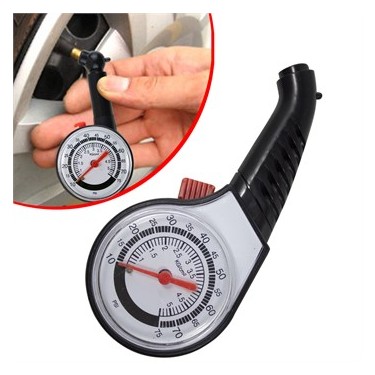
Here’s a tire maintenance routine tip: If you fill up at the gas station every two weeks, it might be easiest to plan to check your tire pressure every other refuel.
How to find affordable car insurance
Is your car insurance policy giving you the coverage you need, or is it making you feel deflated? If you’re looking for better coverage at a better rate, the
Jerry
app makes it easier than ever to find.
It only takes about 45 seconds to answer a few easy questions and start comparing customized quotes from top insurance providers based on your unique driver profile.
As a
licensed broker
, Jerry can help you make a seamless switch to your new provider. When all is said and done, the average driver who updates their car insurance with Jerry saves more than $800 per year—which is practically a whole set of tires.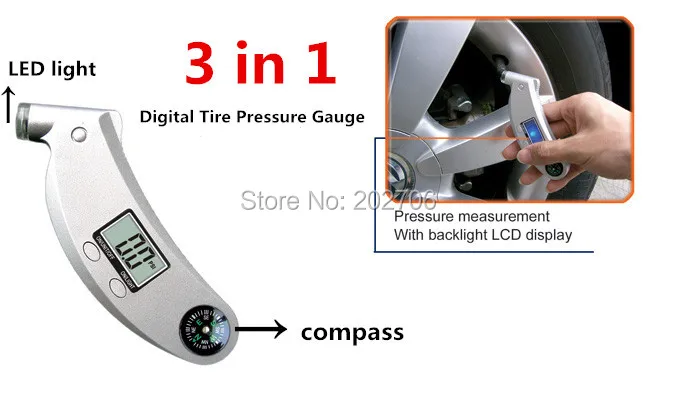
“A super easy app for great savings. I gave them my information and got quotes from
Jerry
very quickly! Now I’m saving $108/month.” —Kiyoshi A.
RECOMMENDED
Instantly compare top insurance companies
No spam or unwanted phone calls · No long forms · No fees, ever
What insurance do you want to compare?
Car
Car + Home
Car + Renters
FAQs
Checking the pressure of your tires at a service station is easy, affordable, and convenient.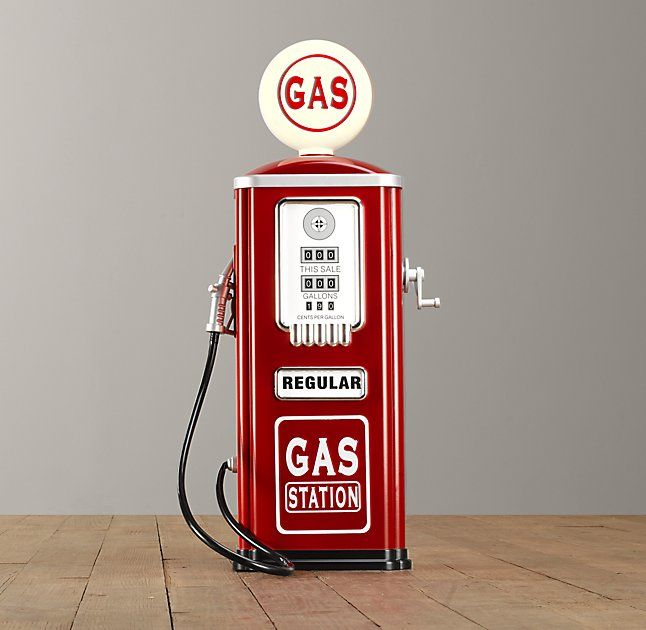 It can be the best way to keep up with one of the most important aspects of the maintenance of your vehicle.
It can be the best way to keep up with one of the most important aspects of the maintenance of your vehicle.
It is very important to maintain your vehicle frequently, and make sure that everything is up to date. Tire pressure check-ups are among the most important routine operations you should consider.
The right pressure can enhance the safety of your journey, and in most cases it can improve the performance of your vehicle as a whole.
If the pressure level is set properly, your car tires will wear out more evenly. This means that their performance will be more consistent throughout the lifespan of the tires, and it will dramatically improve the fuel efficiency of your car. The experience of driving a car with better tires is absolutely mind-blowing, especially if you have been driving with properly pressurized tires for quite some time now.
There are many reasons why you should be aware of the current state of your tires. It is very unsafe to drive with de-pressurized tires.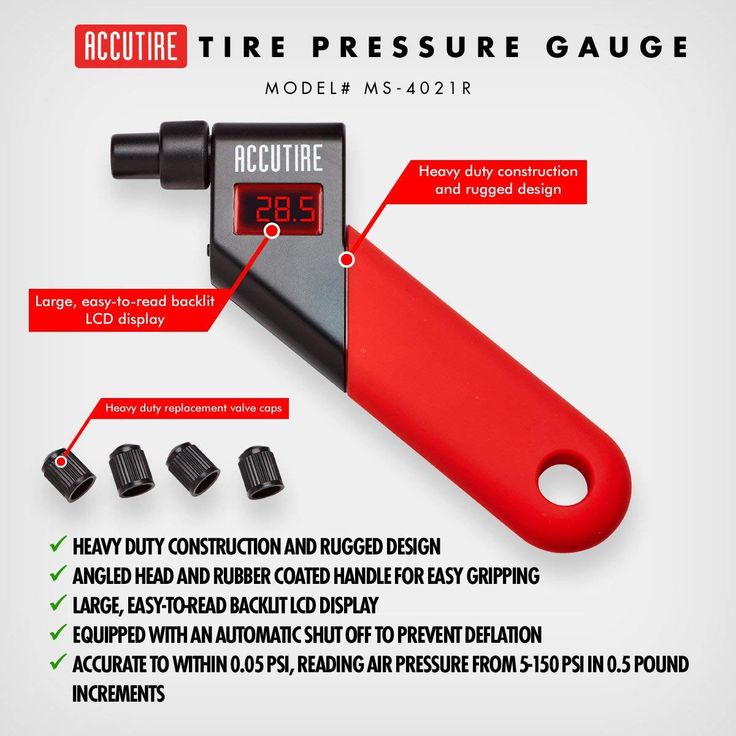 So, it is highly recommended to check up whenever possible. In most cases, it’s advisable to check the pressure of your tires at least once every two months if not more, depending on how often you use your vehicle. There are many ways to check the pressure of your tires. You could go to your trusted car professional or hit any repair shop, and even some dealerships might be able to offer their services.
So, it is highly recommended to check up whenever possible. In most cases, it’s advisable to check the pressure of your tires at least once every two months if not more, depending on how often you use your vehicle. There are many ways to check the pressure of your tires. You could go to your trusted car professional or hit any repair shop, and even some dealerships might be able to offer their services.
On the other hand, some of the most popular places where you can check the pressure of your tires are definitely gas stations and service stations. Whenever you check the pressure of your tires at a gas station, you’re most likely to find special gauges, Which are available for this exact purpose. At first, checking your tires with such gauges might seem intimidating. However, they are easier to use than you might think.
Most gas stations will even have detailed instructions that will walk you through each step of the process. In addition to that, you can always ask a service staff member to help you out check your tire with the gauges if you are really confused and don’t know what to do.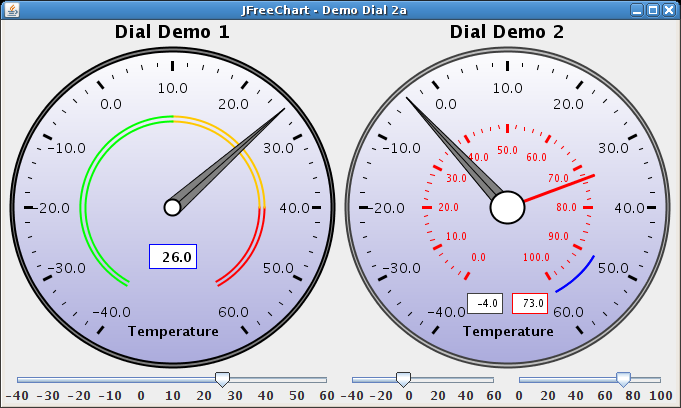
Having said that, it is worth noting that this is a very simple operation that can be performed by pretty much any driver, including beginners.
All you really need is a tire pressure gauge and an air compressor (provided by the gas station) to make adjustments. It might be useful to track the measurements of your pressure over time, you can bring a pen and a notepad along for the ride. If you’re the tech-driven type, you can simply save your measurements on your phone and make it a lot easier.
There are tons of different types of pressure gauges available at gas stations. Some of them are innovative and modern, featuring digital metering and displays. However, most stations still use old-school gauges.
These are still quite relatable and it really is all all about your personal preferences. You can find air compressors at most gas stations as well, and the great thing is that they are super affordable. Using them cost anywhere from a few cents to a dollar, depending on where you are.
If you're like me, you might consider buying your own personal tire pressure gauge. This is a great tool to have in your vehicle and because it's so small, you can store it pretty much anywhere. Click here to view our line of tire gauges!
In order to make sure that you get the most accurate readings, try to make sure that your tires aren’t really hot. If possible, you should also have the manufacturer’s recommended pressure level (PSI) at hand for reference. If you don’t have paper documents handy, you might be able to easily google this information and look it up from your computer. Of course, the vast majority of tires available on the market (if not all of them) actually would display a PSI indication, showing the max pressure recommended.
There are many people who prefer to slightly under-pressurize their cars in relation to the recommended maximum levels. This is because the air might expand as you drive and the tires heat up, therefore potentially increasing the pressure of the tires. This is something that’s particularly common throughout summertime, and in particularly hot areas.
This is something that’s particularly common throughout summertime, and in particularly hot areas.
You are likely going to come across the term PSI, as mentioned earlier on. This refers to “Pounds Per Square Inch,” and it is a standard pressure measurement, that’s really important to consider. Now, what do we mean by “cold tires?” This is a term that indicates the state of tires after the vehicle has not been in use for at least 3 or 4 hours. In addition to that, you can still consider your tires cold if you have been driving your car for less than one mile, and you didn’t travel so fast. This is really good news if you actually have a service station near your home. It means that you can easily take the quick drive to the gas station and check the tires right away, without actually waiting.
As mentioned earlier, you should definitely check the pressure frequently, at least once every couple of months for optimal results.
If the pressure of your tire appears to be too low after checking, you might be able to add some air at the gas station. It usually will only set you back some spare change, and a few quarters should do the trick! Using the air dispenser is very easy, and it is usually free at most stations in the states. Having said that, it is definitely a good investment even if you have to pay for it.
It usually will only set you back some spare change, and a few quarters should do the trick! Using the air dispenser is very easy, and it is usually free at most stations in the states. Having said that, it is definitely a good investment even if you have to pay for it.
While it is appropriate to add some air to correct low pressure, you also need to pay attention to the other side of the spectrum. Especially during the hot season, you might find that your tires might actually be over-pressurized. How does it happen? As you drive around, heat will begin to build up in the tire. As you might know, hotter air can lead the tires to expand and overinflated.
When checking tire pressure, you should care about the accuracy of your measurement. The last thing you want to do is to actually over-inflate the tire, and come out with an incorrect balance. If you follow these suggestions you are certainly going to be able to avoid the hassle of a flat tire and improve the longevity of your tires, not to mention the performance of your vehicle.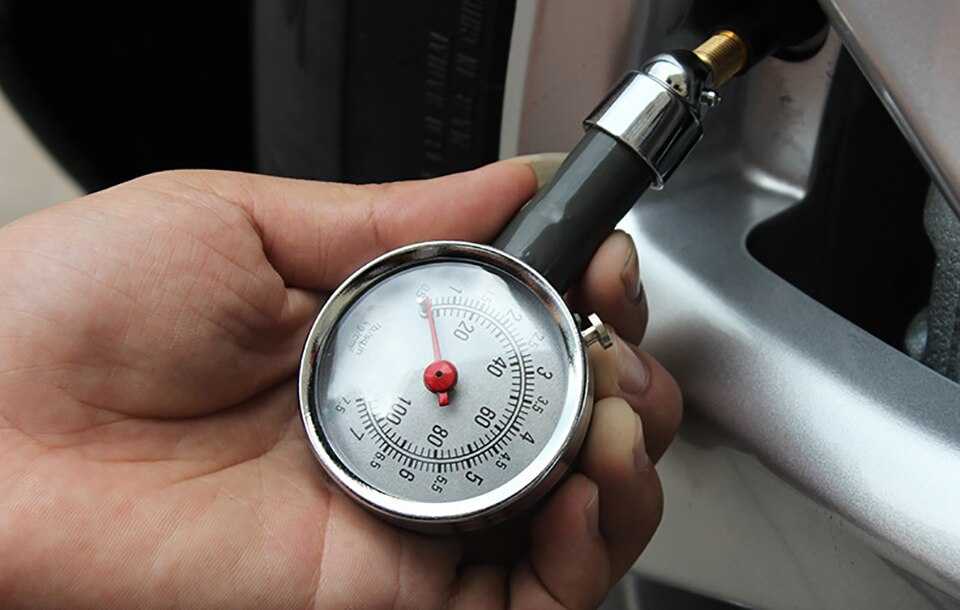
In conclusion, keep in mind that checking the pressure of your tires is very important. You should never underestimate the safety of your self and your family, especially if you are getting ready for long car trips or if you use your vehicle on a day-to-day basis. In fact, the more often you use your car, the more often you should consider checking the pressure of your tires to make sure that you do not run into any unexpected issues.
Featured Product: Rhino USA 100 PSI Tire Pressure Gauge Your browser does not support our video.
Thank you for taking your time to read our article, as mentioned above we sell a line of high quality Tire Pressure Gauges designed for the on-the-go experience. Much better than having to stop at a Gas Station for a quick PSI reading. Get your own gauge today by clicking here.
What is the best tire pressure gauge?
The best tire pressure gauge is the 100psi and 200psi Rhino USA tire pressure gauges. They are certified ANSI B40.1 accurate and come with a premium "no-leak" braided hose and interchangeable solid brass chucks. Rhino USA makes the best tire pressure gauges and to top it off, they all come with a lifetime warranty.
They are certified ANSI B40.1 accurate and come with a premium "no-leak" braided hose and interchangeable solid brass chucks. Rhino USA makes the best tire pressure gauges and to top it off, they all come with a lifetime warranty.
Are digital tire pressure gauges accurate?
A properly calibrated digital tire pressure gauge can be one of the most accurate ways to measure your tire pressure. Rhino USA's digital tire pressure gauge is one of the most accurate tire pressure gauges in the industry, and it features a backlit LCD display and a lighted nozzle for fast, accurate tire pressure readings.
Back to blogCalculating..
Please wait. Theme installer is being initialized.'; var scDesignData = {"style":"simple","position":"center","width":"500px","codeButtonColor":"#ffffff","codeButtonBackgroundColor":"#00e41b","codeButtonBorderColor":"#ffffff","submitButtonBorderColor":"#000000","loadingBg":"#b9b9b9","spinnerColor":"#ffffff","inputColor":"#535353","inputBg":"#ffffff","inputBorder":"#aeaeae","discountInfoColor":"#535353","discountInfoBg":"#fafafa","discountInfoBorder":"#e1e1e1"} || {}; window. scIsCartPage = false; window.scCartData = {"note":null,"attributes":{},"original_total_price":0,"total_price":0,"total_discount":0,"total_weight":0.0,"item_count":0,"items":[],"requires_shipping":false,"currency":"USD","items_subtotal_price":0,"cart_level_discount_applications":[],"checkout_charge_amount":0}; if (!window.scMoneyFormat) window.scMoneyFormat = '${{amount}}'; window.scDesignConfig = { style: scDesignData.style || 'simple', position: scDesignData.position || 'right', containerWidth: { width: scDesignData.width || '350px' }, codeButton: { color: scDesignData.codeButtonColor || '#fff', backgroundColor: scDesignData.codeButtonBackgroundColor || '#5aaa34', border: '1px solid ' + (scDesignData.codeButtonBorderColor || '#5aaa34') }, submitButton: { borderColor: scDesignData.submitButtonBorderColor }, loadingBg: { background: scDesignData.
scIsCartPage = false; window.scCartData = {"note":null,"attributes":{},"original_total_price":0,"total_price":0,"total_discount":0,"total_weight":0.0,"item_count":0,"items":[],"requires_shipping":false,"currency":"USD","items_subtotal_price":0,"cart_level_discount_applications":[],"checkout_charge_amount":0}; if (!window.scMoneyFormat) window.scMoneyFormat = '${{amount}}'; window.scDesignConfig = { style: scDesignData.style || 'simple', position: scDesignData.position || 'right', containerWidth: { width: scDesignData.width || '350px' }, codeButton: { color: scDesignData.codeButtonColor || '#fff', backgroundColor: scDesignData.codeButtonBackgroundColor || '#5aaa34', border: '1px solid ' + (scDesignData.codeButtonBorderColor || '#5aaa34') }, submitButton: { borderColor: scDesignData.submitButtonBorderColor }, loadingBg: { background: scDesignData. loadingBg || '#339933' }, spinner: { stroke: scDesignData.spinnerColor || '#ffffff' }, codeInput: { borderColor: scDesignData.inputBorder || '#aeaeae', color: scDesignData.inputColor || '#339933', backgroundColor: scDesignData.inputBg || '#ffffff' }, discountInfo: { background: scDesignData.discountInfoBg || '#fafafa', border: '1px solid ' + (scDesignData.discountInfoBorder || '#e1e1e1'), color: scDesignData.discountInfoColor || '#535353' } }; if (!window.scTranslationConfig) { window.scTranslationConfig = {"placeholder":"Discount code or gift card","submitBtn":"Apply","codeLabel":"Code:","discountLabel":"Discount:","giftCardLabel":"Gift card:","total":"Total:","errorAutomaticDiscount":"A discount has been applied to this order. You can’t add another discount","errorCode":"Unable to find a valid discount matching the code entered","tooManyAttempts":"Too many attempts please try again in a few minutes","errorNetwork":"Network error occured.
loadingBg || '#339933' }, spinner: { stroke: scDesignData.spinnerColor || '#ffffff' }, codeInput: { borderColor: scDesignData.inputBorder || '#aeaeae', color: scDesignData.inputColor || '#339933', backgroundColor: scDesignData.inputBg || '#ffffff' }, discountInfo: { background: scDesignData.discountInfoBg || '#fafafa', border: '1px solid ' + (scDesignData.discountInfoBorder || '#e1e1e1'), color: scDesignData.discountInfoColor || '#535353' } }; if (!window.scTranslationConfig) { window.scTranslationConfig = {"placeholder":"Discount code or gift card","submitBtn":"Apply","codeLabel":"Code:","discountLabel":"Discount:","giftCardLabel":"Gift card:","total":"Total:","errorAutomaticDiscount":"A discount has been applied to this order. You can’t add another discount","errorCode":"Unable to find a valid discount matching the code entered","tooManyAttempts":"Too many attempts please try again in a few minutes","errorNetwork":"Network error occured. You may enter your discount code during the checkout","authorized":"Discounts are available only for authorized users","messages":{"shopify.checkout.order_summary.cart_does_not_meet_discount_requirements_notice":"\u003cstrong\u003e{{ code }}\u003c\/strong\u003e discount code isn’t valid for the items in your cart","shopify.checkout.order_summary.discount_requires_customer_notice":"Enter your shipping information to apply the \u003cstrong\u003e{{ code }}\u003c\/strong\u003e discount code","shopify.checkout.order_summary.customer_does_not_meet_discount_requirements_notice":"\u003cstrong\u003e{{ code }}\u003c\/strong\u003e discount code isn’t available to you right now","shopify.checkout.order_summary.shipping_information_does_not_meet_discount_requirements_notice":"\u003cstrong\u003e{{ code }}\u003c\/strong\u003e discount code isn’t available for your shipping address","shopify.checkout.order_summary.customer_already_used_once_per_customer_discount_notice":"The {{ code }} discount code has already been used","shopify.
You may enter your discount code during the checkout","authorized":"Discounts are available only for authorized users","messages":{"shopify.checkout.order_summary.cart_does_not_meet_discount_requirements_notice":"\u003cstrong\u003e{{ code }}\u003c\/strong\u003e discount code isn’t valid for the items in your cart","shopify.checkout.order_summary.discount_requires_customer_notice":"Enter your shipping information to apply the \u003cstrong\u003e{{ code }}\u003c\/strong\u003e discount code","shopify.checkout.order_summary.customer_does_not_meet_discount_requirements_notice":"\u003cstrong\u003e{{ code }}\u003c\/strong\u003e discount code isn’t available to you right now","shopify.checkout.order_summary.shipping_information_does_not_meet_discount_requirements_notice":"\u003cstrong\u003e{{ code }}\u003c\/strong\u003e discount code isn’t available for your shipping address","shopify.checkout.order_summary.customer_already_used_once_per_customer_discount_notice":"The {{ code }} discount code has already been used","shopify.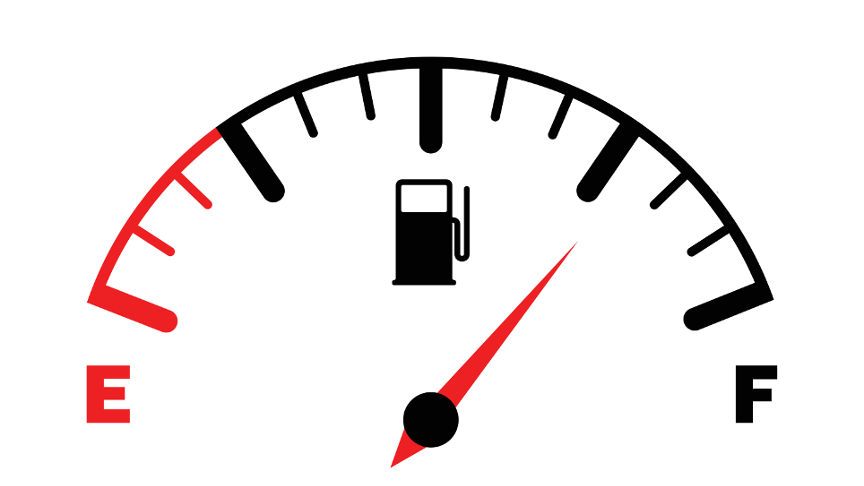 checkout.field_errors.reduction_code_code_not_found":"Enter a valid discount code or gift card","shopify.checkout.field_errors.reduction_code_discount_not_found":"Enter a valid discount code","shopify.errors.discount_not_found":"Unable to find a valid discount matching the code entered","shopify.checkout.order_summary.discount_already_applied":"A discount has been applied to this order. You can’t add another discount","shopify.errors.discount_disabled":"This discount has been disabled","shopify.errors.discount_expired":"This discount is not valid anymore","shopify.errors.discount_limit_reached":"This discount has reached its usage limit","shopify.checkout.field_errors.reduction_code_gift_card_code_invalid":"Enter a valid gift card","shopify.checkout.field_errors.reduction_code_gift_card_unusable_with_subscriptions":"You can’t use a gift card to buy a subscription","shopify.checkout.field_errors.reduction_code_gift_card_unusable":"You can’t use a gift card to buy another gift card","shopify.
checkout.field_errors.reduction_code_code_not_found":"Enter a valid discount code or gift card","shopify.checkout.field_errors.reduction_code_discount_not_found":"Enter a valid discount code","shopify.errors.discount_not_found":"Unable to find a valid discount matching the code entered","shopify.checkout.order_summary.discount_already_applied":"A discount has been applied to this order. You can’t add another discount","shopify.errors.discount_disabled":"This discount has been disabled","shopify.errors.discount_expired":"This discount is not valid anymore","shopify.errors.discount_limit_reached":"This discount has reached its usage limit","shopify.checkout.field_errors.reduction_code_gift_card_code_invalid":"Enter a valid gift card","shopify.checkout.field_errors.reduction_code_gift_card_unusable_with_subscriptions":"You can’t use a gift card to buy a subscription","shopify.checkout.field_errors.reduction_code_gift_card_unusable":"You can’t use a gift card to buy another gift card","shopify. checkout.field_errors.gift_card_already_applied":"This gift card has already been applied to your order","shopify.checkout.field_errors.gift_card_disabled":"This gift card is no longer available","shopify.checkout.field_errors.gift_card_expired":"This gift card has expired","shopify.checkout.field_errors.gift_card_depleted":"This gift card has no funds left","shopify.checkout.field_errors.gift_card_currency_mismatch":"Only gift cards in {{ checkout_currency }} can be used with this order","shopify.checkout.field_errors.physical_gift_card_invalid_quantity":"Physical gift card line items must have a quantity that matches the number of gift card codes","shopify.checkout.field_errors.physical_gift_card_duplicate_code":"Physical gift card line item contains duplicate code","shopify.checkout.field_errors.physical_gift_card_invalid_code":"Physical gift card code is invalid","shopify.checkout.thank_you.gift_card_confirmation_by_text":"Gift cards are sent by text. If you haven’t received yours, try sending them again or contact us","shopify.
checkout.field_errors.gift_card_already_applied":"This gift card has already been applied to your order","shopify.checkout.field_errors.gift_card_disabled":"This gift card is no longer available","shopify.checkout.field_errors.gift_card_expired":"This gift card has expired","shopify.checkout.field_errors.gift_card_depleted":"This gift card has no funds left","shopify.checkout.field_errors.gift_card_currency_mismatch":"Only gift cards in {{ checkout_currency }} can be used with this order","shopify.checkout.field_errors.physical_gift_card_invalid_quantity":"Physical gift card line items must have a quantity that matches the number of gift card codes","shopify.checkout.field_errors.physical_gift_card_duplicate_code":"Physical gift card line item contains duplicate code","shopify.checkout.field_errors.physical_gift_card_invalid_code":"Physical gift card code is invalid","shopify.checkout.thank_you.gift_card_confirmation_by_text":"Gift cards are sent by text. If you haven’t received yours, try sending them again or contact us","shopify. checkout.thank_you.gift_card_confirmation_by_email":"Gift cards are sent by email. If you haven’t received yours, try sending them again or contact us","shopify.errors.gift_card_already_applied":"Code has already been applied to your checkout","shopify.errors.gift_card_code_invalid":"Code is invalid","shopify.errors.gift_card_currency_mismatch":"{{ gift_card_currency }} gift cards can’t be applied on {{ checkout_currency }} orders","shopify.errors.gift_card_depleted":"There are no funds left on this gift card","shopify.errors.gift_card_disabled":"Gift card is disabled","shopify.errors.gift_card_expired":"Gift card is expired","unexpected":"Unknown error occured. You may enter your discount code during the checkout"},"freeShippingLabel":"Free Shipping"} || {"placeholder":"Discount code or gift card","submitBtn":"Apply","codeLabel":"Code:","discountLabel":"Discount:","giftCardLabel":"Gift card:","total":"Total:","errorAutomaticDiscount":"A discount has been applied to this order. You can’t add another discount","errorCode":"Unable to find a valid discount matching the code entered","tooManyAttempts":"Too many attempts please try again in a few minutes","errorNetwork":"Network error occured.
checkout.thank_you.gift_card_confirmation_by_email":"Gift cards are sent by email. If you haven’t received yours, try sending them again or contact us","shopify.errors.gift_card_already_applied":"Code has already been applied to your checkout","shopify.errors.gift_card_code_invalid":"Code is invalid","shopify.errors.gift_card_currency_mismatch":"{{ gift_card_currency }} gift cards can’t be applied on {{ checkout_currency }} orders","shopify.errors.gift_card_depleted":"There are no funds left on this gift card","shopify.errors.gift_card_disabled":"Gift card is disabled","shopify.errors.gift_card_expired":"Gift card is expired","unexpected":"Unknown error occured. You may enter your discount code during the checkout"},"freeShippingLabel":"Free Shipping"} || {"placeholder":"Discount code or gift card","submitBtn":"Apply","codeLabel":"Code:","discountLabel":"Discount:","giftCardLabel":"Gift card:","total":"Total:","errorAutomaticDiscount":"A discount has been applied to this order. You can’t add another discount","errorCode":"Unable to find a valid discount matching the code entered","tooManyAttempts":"Too many attempts please try again in a few minutes","errorNetwork":"Network error occured.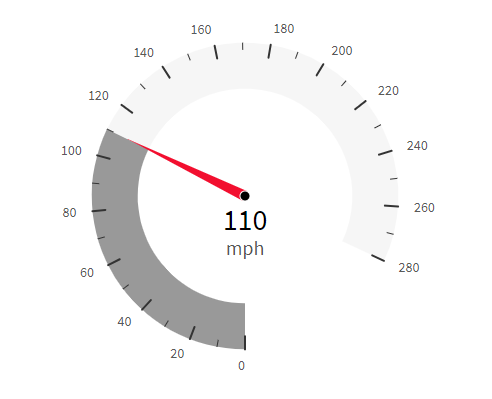 You may enter your discount code during the checkout","authorized":"Discounts are available only for authorized users","messages":{"shopify.checkout.order_summary.cart_does_not_meet_discount_requirements_notice":"\u003cstrong\u003e{{ code }}\u003c\/strong\u003e discount code isn’t valid for the items in your cart","shopify.checkout.order_summary.discount_requires_customer_notice":"Enter your shipping information to apply the \u003cstrong\u003e{{ code }}\u003c\/strong\u003e discount code","shopify.checkout.order_summary.customer_does_not_meet_discount_requirements_notice":"\u003cstrong\u003e{{ code }}\u003c\/strong\u003e discount code isn’t available to you right now","shopify.checkout.order_summary.shipping_information_does_not_meet_discount_requirements_notice":"\u003cstrong\u003e{{ code }}\u003c\/strong\u003e discount code isn’t available for your shipping address","shopify.checkout.order_summary.customer_already_used_once_per_customer_discount_notice":"The {{ code }} discount code has already been used","shopify.
You may enter your discount code during the checkout","authorized":"Discounts are available only for authorized users","messages":{"shopify.checkout.order_summary.cart_does_not_meet_discount_requirements_notice":"\u003cstrong\u003e{{ code }}\u003c\/strong\u003e discount code isn’t valid for the items in your cart","shopify.checkout.order_summary.discount_requires_customer_notice":"Enter your shipping information to apply the \u003cstrong\u003e{{ code }}\u003c\/strong\u003e discount code","shopify.checkout.order_summary.customer_does_not_meet_discount_requirements_notice":"\u003cstrong\u003e{{ code }}\u003c\/strong\u003e discount code isn’t available to you right now","shopify.checkout.order_summary.shipping_information_does_not_meet_discount_requirements_notice":"\u003cstrong\u003e{{ code }}\u003c\/strong\u003e discount code isn’t available for your shipping address","shopify.checkout.order_summary.customer_already_used_once_per_customer_discount_notice":"The {{ code }} discount code has already been used","shopify. checkout.field_errors.reduction_code_code_not_found":"Enter a valid discount code or gift card","shopify.checkout.field_errors.reduction_code_discount_not_found":"Enter a valid discount code","shopify.errors.discount_not_found":"Unable to find a valid discount matching the code entered","shopify.checkout.order_summary.discount_already_applied":"A discount has been applied to this order. You can’t add another discount","shopify.errors.discount_disabled":"This discount has been disabled","shopify.errors.discount_expired":"This discount is not valid anymore","shopify.errors.discount_limit_reached":"This discount has reached its usage limit","shopify.checkout.field_errors.reduction_code_gift_card_code_invalid":"Enter a valid gift card","shopify.checkout.field_errors.reduction_code_gift_card_unusable_with_subscriptions":"You can’t use a gift card to buy a subscription","shopify.checkout.field_errors.reduction_code_gift_card_unusable":"You can’t use a gift card to buy another gift card","shopify.
checkout.field_errors.reduction_code_code_not_found":"Enter a valid discount code or gift card","shopify.checkout.field_errors.reduction_code_discount_not_found":"Enter a valid discount code","shopify.errors.discount_not_found":"Unable to find a valid discount matching the code entered","shopify.checkout.order_summary.discount_already_applied":"A discount has been applied to this order. You can’t add another discount","shopify.errors.discount_disabled":"This discount has been disabled","shopify.errors.discount_expired":"This discount is not valid anymore","shopify.errors.discount_limit_reached":"This discount has reached its usage limit","shopify.checkout.field_errors.reduction_code_gift_card_code_invalid":"Enter a valid gift card","shopify.checkout.field_errors.reduction_code_gift_card_unusable_with_subscriptions":"You can’t use a gift card to buy a subscription","shopify.checkout.field_errors.reduction_code_gift_card_unusable":"You can’t use a gift card to buy another gift card","shopify. checkout.field_errors.gift_card_already_applied":"This gift card has already been applied to your order","shopify.checkout.field_errors.gift_card_disabled":"This gift card is no longer available","shopify.checkout.field_errors.gift_card_expired":"This gift card has expired","shopify.checkout.field_errors.gift_card_depleted":"This gift card has no funds left","shopify.checkout.field_errors.gift_card_currency_mismatch":"Only gift cards in {{ checkout_currency }} can be used with this order","shopify.checkout.field_errors.physical_gift_card_invalid_quantity":"Physical gift card line items must have a quantity that matches the number of gift card codes","shopify.checkout.field_errors.physical_gift_card_duplicate_code":"Physical gift card line item contains duplicate code","shopify.checkout.field_errors.physical_gift_card_invalid_code":"Physical gift card code is invalid","shopify.checkout.thank_you.gift_card_confirmation_by_text":"Gift cards are sent by text. If you haven’t received yours, try sending them again or contact us","shopify.
checkout.field_errors.gift_card_already_applied":"This gift card has already been applied to your order","shopify.checkout.field_errors.gift_card_disabled":"This gift card is no longer available","shopify.checkout.field_errors.gift_card_expired":"This gift card has expired","shopify.checkout.field_errors.gift_card_depleted":"This gift card has no funds left","shopify.checkout.field_errors.gift_card_currency_mismatch":"Only gift cards in {{ checkout_currency }} can be used with this order","shopify.checkout.field_errors.physical_gift_card_invalid_quantity":"Physical gift card line items must have a quantity that matches the number of gift card codes","shopify.checkout.field_errors.physical_gift_card_duplicate_code":"Physical gift card line item contains duplicate code","shopify.checkout.field_errors.physical_gift_card_invalid_code":"Physical gift card code is invalid","shopify.checkout.thank_you.gift_card_confirmation_by_text":"Gift cards are sent by text. If you haven’t received yours, try sending them again or contact us","shopify.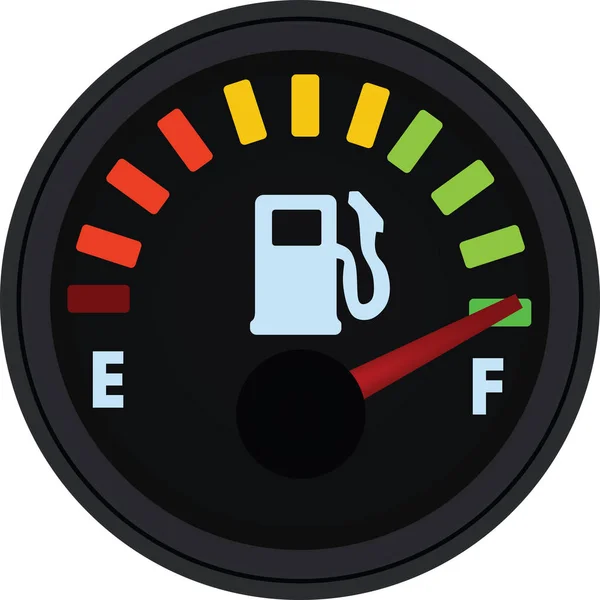 checkout.thank_you.gift_card_confirmation_by_email":"Gift cards are sent by email. If you haven’t received yours, try sending them again or contact us","shopify.errors.gift_card_already_applied":"Code has already been applied to your checkout","shopify.errors.gift_card_code_invalid":"Code is invalid","shopify.errors.gift_card_currency_mismatch":"{{ gift_card_currency }} gift cards can’t be applied on {{ checkout_currency }} orders","shopify.errors.gift_card_depleted":"There are no funds left on this gift card","shopify.errors.gift_card_disabled":"Gift card is disabled","shopify.errors.gift_card_expired":"Gift card is expired","unexpected":"Unknown error occured. You may enter your discount code during the checkout"},"freeShippingLabel":"Free Shipping"}; } window.scPrimaryLocale = 'en'; if (!window.scThemeConfig) { var scThemeConfig = { cartDiscountSelector: {}, ajaxDicountSelector: {}, ajaxTotalSelector: {}, cartTotalSelector: {}, }; } var scProduct = 41294382137535; var scProductUrl = '/products/sxs-utv-atv-pro-kit'; var cartTotal = 0; var __assign = (this && this.
checkout.thank_you.gift_card_confirmation_by_email":"Gift cards are sent by email. If you haven’t received yours, try sending them again or contact us","shopify.errors.gift_card_already_applied":"Code has already been applied to your checkout","shopify.errors.gift_card_code_invalid":"Code is invalid","shopify.errors.gift_card_currency_mismatch":"{{ gift_card_currency }} gift cards can’t be applied on {{ checkout_currency }} orders","shopify.errors.gift_card_depleted":"There are no funds left on this gift card","shopify.errors.gift_card_disabled":"Gift card is disabled","shopify.errors.gift_card_expired":"Gift card is expired","unexpected":"Unknown error occured. You may enter your discount code during the checkout"},"freeShippingLabel":"Free Shipping"}; } window.scPrimaryLocale = 'en'; if (!window.scThemeConfig) { var scThemeConfig = { cartDiscountSelector: {}, ajaxDicountSelector: {}, ajaxTotalSelector: {}, cartTotalSelector: {}, }; } var scProduct = 41294382137535; var scProductUrl = '/products/sxs-utv-atv-pro-kit'; var cartTotal = 0; var __assign = (this && this. __assign) || function () { __assign = Object.assign || function(t) { for (var s, i = 1, n = arguments.length; i
__assign) || function () { __assign = Object.assign || function(t) { for (var s, i = 1, n = arguments.length; i The manometer is a compact device for measuring pressure. The sensor is installed on the top of the cylinder. The manometer is a low cylinder, consisting of a metal case with a glass or plastic cover. Under the glass, a scale with divisions indicating pressure units is clearly visible. A tube with an external thread is mounted on the side of the housing for connection to the system in which pressure is to be measured.
Contents:
Functions of the pressure gauge
Color zones of the pressure gauge
✎ Fire extinguisher pressure gauge in the red zone
✎ Fire extinguisher pressure gauge in the yellow zone
✎ Pressure gauge in the green zone
What is the pressure in the fire extinguisher?
The pressure indicator on the fire extinguisher allows you to control the performance of the device. The pressure gauge shows whether it is in working order or requires service.
The pressure gauge shows whether it is in working order or requires service.
The sensors are mounted on the pump-in fire extinguishers (their charge and body are continuously under the pressure of the propellant gas). The most common pressure control devices are found in powder fire extinguishers. They are purchased by schools, kindergartens, hospitals and other institutions. Fire inspectors have no right to demand the presence of fire equipment with a pressure gauge.
Manometers can be found on carbon dioxide, emulsion and air-foam fire extinguishers.
Readings from the device are taken once a quarter. The results are recorded in a special journal.
To make it easier to check the performance of the fire extinguisher, the scale was divided into sections of different colors. Therefore, it is not at all necessary to remember all the normative values, it is enough to understand what this or that color means.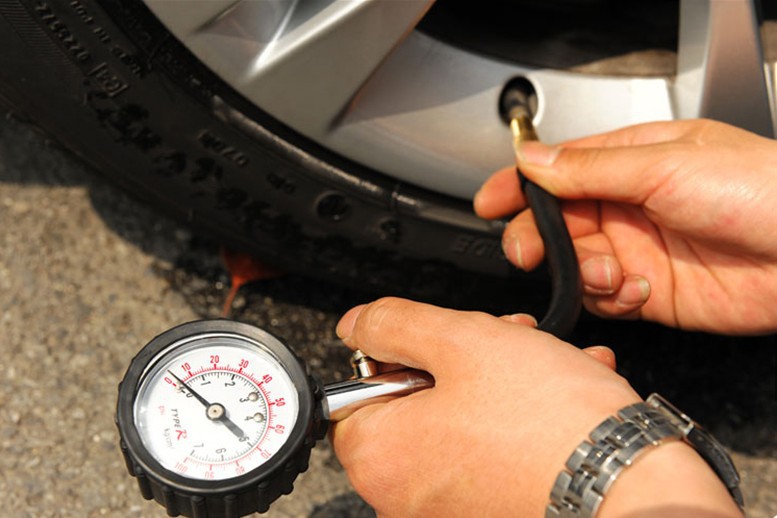
Danger. If the pressure gauge pointer is in the red field, then the fire extinguisher is faulty. The alleged reason for the deviation from the standard indicators is incorrect storage conditions. Such a device should be sent for diagnostics.
If checking and refilling do not improve the situation, the fire extinguisher is replaced.
Call. Yellow color indicates a deviation of indicators from the normative ones.
The amount of MPa exceeds the norm, notifies of non-critical malfunctions. Perhaps there is a risk of overheating of the case and the fire extinguisher should be moved to another, cooler place. After a day, you need to check the sensor readings.
If the pressure gauge stops in the yellow zone, the cause of the malfunction must be identified and corrected.
The sensor pointer is located in the green zone - the fire extinguisher is fully operational and ready for operation.
The operating pressure limits are marked on the scale with special numbers. The pressure in fire extinguishers is measured in megapascals.
Maximum pressure levels depending on the type of device:
If the fire extinguisher is in good working order, it is able to withstand not only standard indicators, but also leave a reserve.
Fire extinguishers with damaged pressure gauges must not be used. Do not store fire equipment near heat sources, fire extinguishers should not be exposed to direct sunlight. If the pressure exceeds the norm, it is necessary to release part of the gas or hold the cylinder in cold water.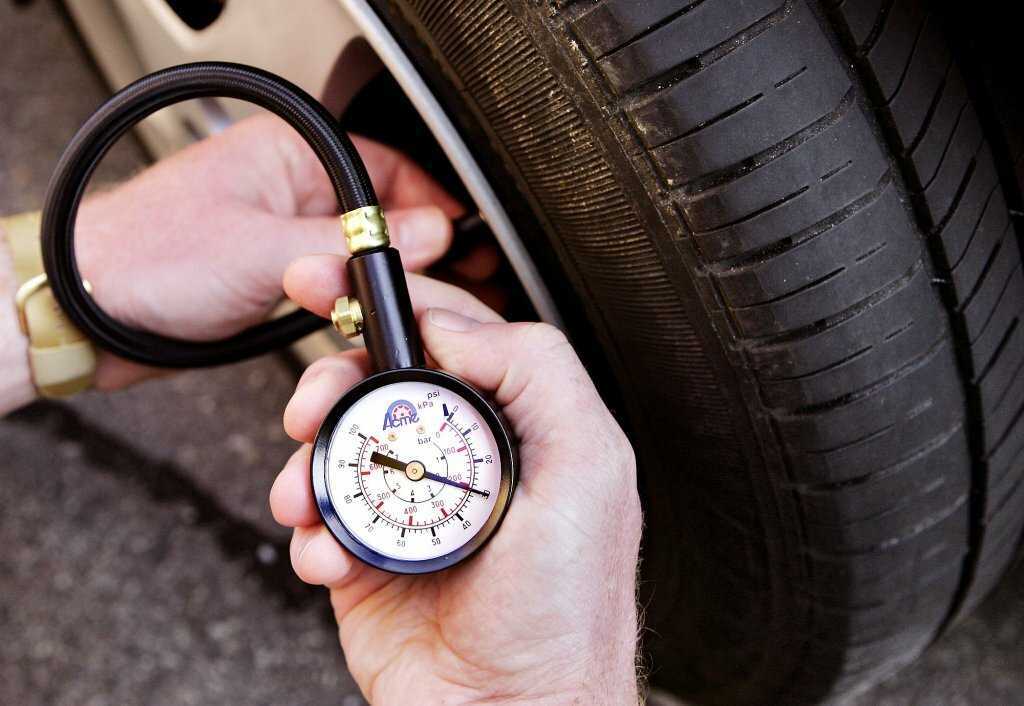
At the initial stage, the fire can be eliminated. The main thing is that at this moment there is a serviceable fire equipment nearby. The ability to use a pressure sensor will help you purchase a working model, as well as determine when the fire extinguisher needs to be replaced or sent for diagnostics.
Added: 08/03/2021
All pressure gauges built into the compressors show incorrect values! And the reason is not only the inaccuracy of the instruments.
The examination of compressors with digital pressure gauges did not involve big “discoveries”. However, at the very first measurements, an interesting thing turned out: the reference pressure gauge showed that the pressure in the inflated tire was not at all the same as that given to the compressor. They took another compressor - the tire again turned out to be under-inflated. And so it was with all devices. Why?
Why?
10 "pumps": examination of compressors Tire pressure monitoring systems - how they work Tire pressure: your norm
First thought: regular pressure gauges are lying. To check them, a splitter was connected to the compressor hose. One of its sleeves was connected to an exemplary pressure gauge, and the second to the inflated wheel.
How to inflate a wheel without a pump? 5 myths and 2 risky ways
Indeed, they all lied, but the pressure in the inflated tire still did not correspond to the required one. An exemplary pressure gauge connected to a running compressor showed 2.0 bar, but as soon as the electric motor died, the pressure decreased to 1.8 bar. The same exemplary pressure gauge showed when connected directly to the wheel valve. How to explain this fact?
The fact is that approximately 0.2 bar is lost when overcoming a narrow bottle neck - channels in the spool.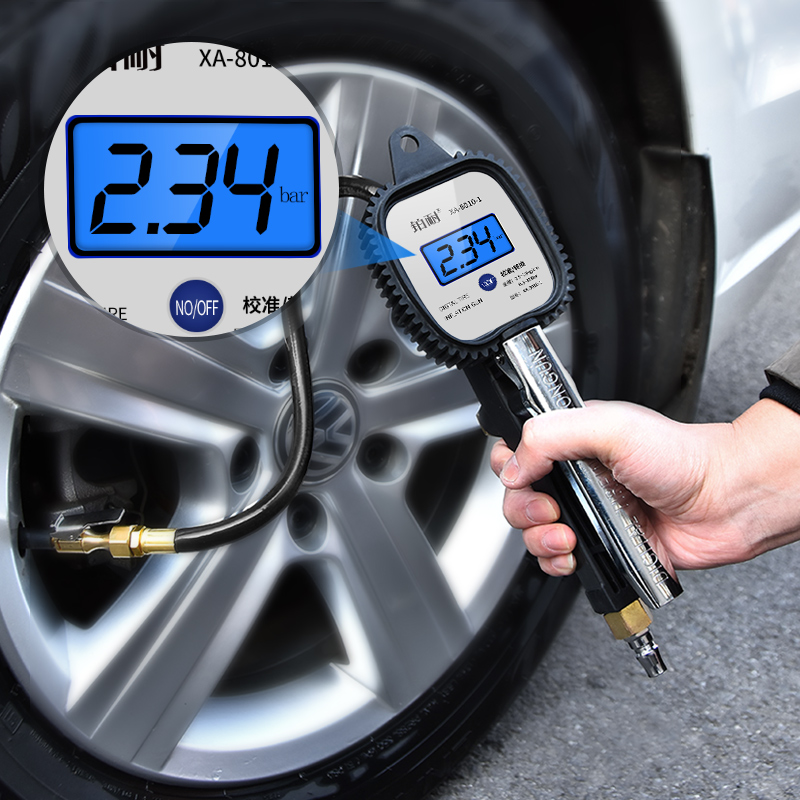 As soon as the compressor is turned off and the air flow becomes equal to zero, the pressure in the entire system immediately equalizes - then the error of the compressor pressure gauge can be estimated.
As soon as the compressor is turned off and the air flow becomes equal to zero, the pressure in the entire system immediately equalizes - then the error of the compressor pressure gauge can be estimated.
Inflate or inflate? Non-Standard Compressor Test
Understanding came when they guessed to connect a valve turned out of the wheel to a running compressor. It would seem that the pressure gauge should show zero: after all, there is no back pressure. However, the first experience showed an excess of 0.4 bar! Having gone through several valves from different manufacturers, we determined the range of "overestimations" - from 0.4 to 0.6 bar.
The scatter of readings depends on how much the spool pin moves when the compressor hose nozzle pushes on it. Just don’t think that we didn’t fit or screw the pump tip onto the valve tightly enough. If the tip does not press the spool pin at all, the valve will open at a pressure of at least 5 bar.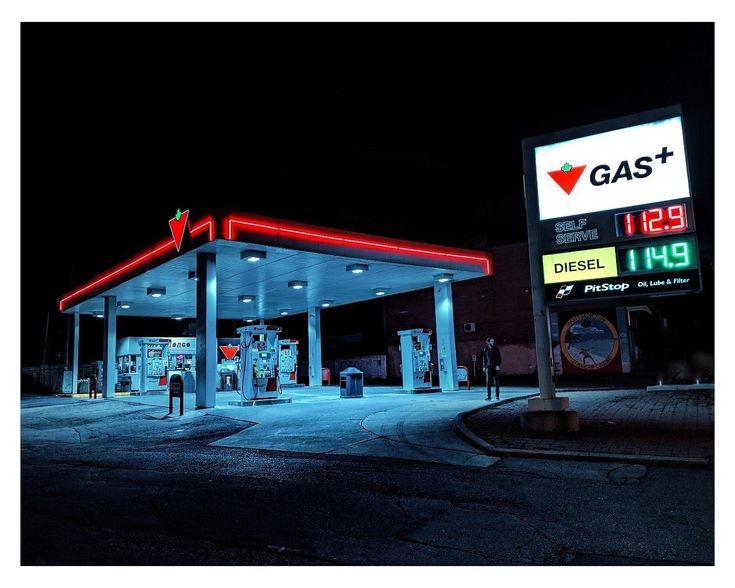 And such an ordinary automobile compressor develops with great difficulty.
And such an ordinary automobile compressor develops with great difficulty.
Installation diagram for checking compressor pressure gauges
1 wheel, 2 valve, 3 reference pressure gauge, 4 test compressor with integrated pressure gauge.
This “error” is easiest to catch when you inflate a completely flat tire. The pressure gauge in the first second of compressor operation will show a pressure of at least 0.4 bar. This is the backwater formed by very narrow sections for the passage of air in the spool. And its value is maximum on a flat tire. Why does it decrease as tire pressure increases?
Small tire compressors: expertise of the magazine "Behind the wheel"
At the beginning of pumping, the flow is maximum, the speed is high and the resistance (it is proportional to the square of the speed) is greater. As the tire is inflated, it becomes harder for the compressor to pump, the air flow drops, and with it the resistance on the spool decreases. Therefore, at high pressures, compressor pressure gauges show tire pressure more and more accurately. And at the maximum pressure that the pump can develop, the flow rate, and with it the back pressure, tend to zero. And the measurement error disappears.
Therefore, at high pressures, compressor pressure gauges show tire pressure more and more accurately. And at the maximum pressure that the pump can develop, the flow rate, and with it the back pressure, tend to zero. And the measurement error disappears.
The connecting element, which is put on or screwed on the valve, also plays a role in the resistance of the air supply line from the compressor to the tire. The largest air passage is provided by tap type tips, and the highest resistance - up to 0.15 bar - is provided by tips with a narrow gap. But it is especially important that the tip fully presses the spool valve. Because if it does not fully open, the resistance of the spool will become even greater. The correct connection of the tip to the valve is important here. It is necessary to ensure the tightest possible putting on (or screwing) of the tip.
Compressor tips are available in different designs. The larger the cross section, the better for the passage of air.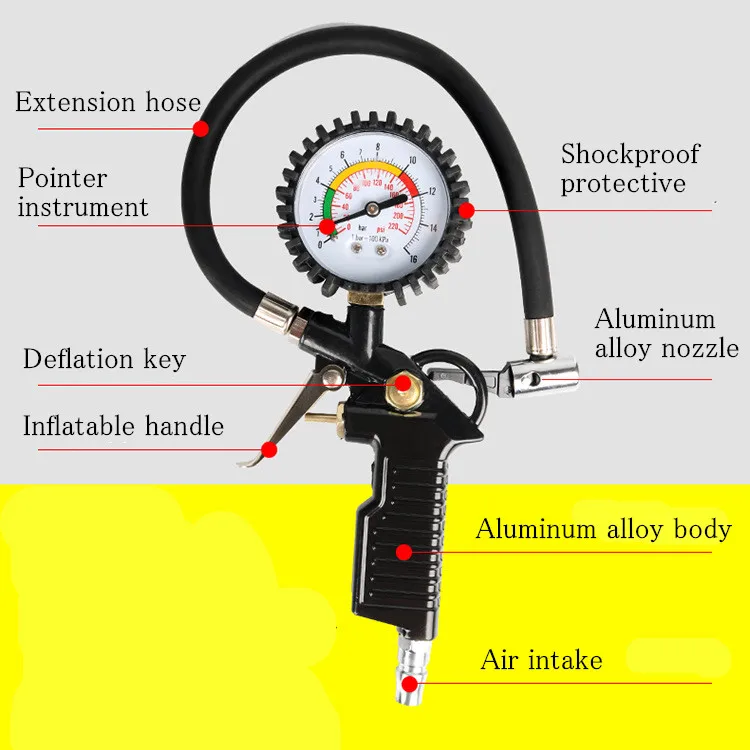
It remains to admit the obvious: it is impossible to accurately set the pressure using compressor pressure gauges . After all, any valve is an obstacle to the air flow. And any obstacle creates the same counterpressure. For this reason, in all compressors, the pressure generated is always greater than what we later measure directly on the wheel. Therefore, even the most accurate built-in device will always show a pressure higher than in the tire. And accordingly, the compressor will turn off earlier than necessary.
It is better to inflate the tire with a margin, measure the pressure with an accurate pressure gauge and bring it back to normal by bleeding excess air from the tire.
Choosing a tire pressure gauge - cheaper and more accurate
You can set the pressure with some advance. If you need to get 2.0 bar, you should inflate the wheel to 2.2 bar. However, different valves create different back pressure, the value of which is not known in advance.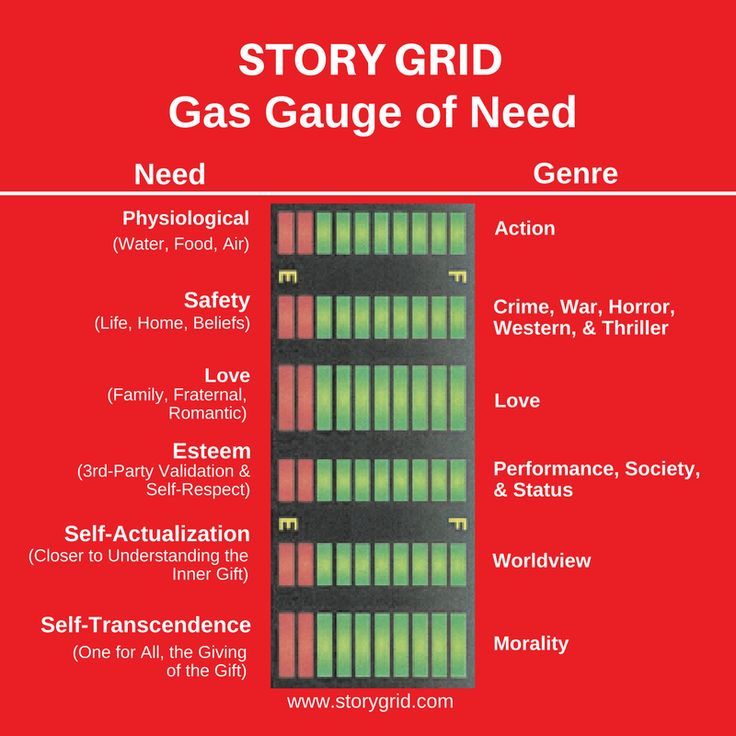 And even in one car, she can walk from wheel to wheel. We encountered this phenomenon in the examination of electronic pressure gauges (we will publish it in the September issue of the journal). By the way, in most cases, their accuracy is higher than that of the devices built into the compressors. Therefore, we advise everyone to acquire such a pressure gauge in addition to the compressor.
And even in one car, she can walk from wheel to wheel. We encountered this phenomenon in the examination of electronic pressure gauges (we will publish it in the September issue of the journal). By the way, in most cases, their accuracy is higher than that of the devices built into the compressors. Therefore, we advise everyone to acquire such a pressure gauge in addition to the compressor.
As a result of , the surest way is to inflate the wheel to a known higher pressure, with an excess of 0.2–0.3 bar, and then measure the actual pressure with a pressure gauge, bleeding air from tire if necessary.
OUR REFERENCE
Spool design
1 – sealing sleeve; 2 - sealant; 3 - threaded bushing; 4 - spool rod; 5 - valve body; 6 - valve body; 7 - conical spring; 8 - valve cup. The spools of the old (a) and new (b) samples are completely interchangeable. The air resistance is about the same.
If you looked into the wheel valve hole, you probably saw a spool there.